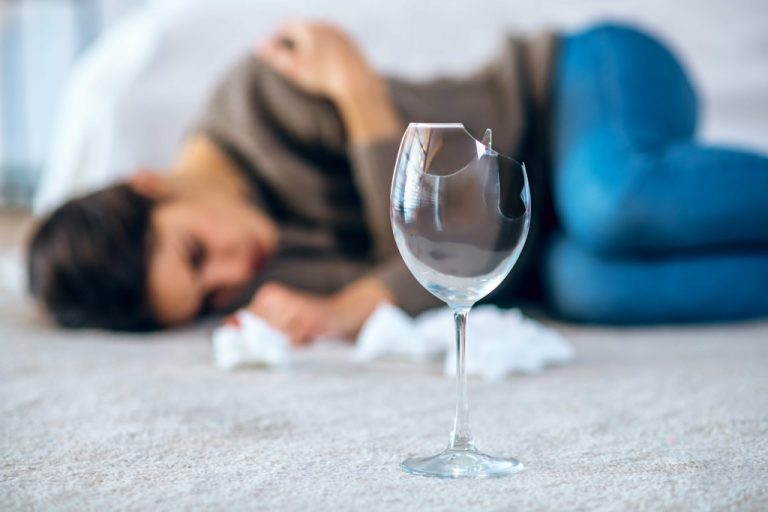These therapies are generally considered medically and ethically appropriate when administered in carefully controlled clinical settings with extensive psychological support before, during, and after the dosing sessions. There are several examples of successful evidence of drug discovery via DL.199, 213 DeepDTnet was used to predict the identification of targets and repurposed drugs via a drug‒gene‒disease network. In particular, three drugs, alisporivir, Cyclosporine, and Voclosporin, have critical functions in the life cycle of coronaviruses as cyclophilin enzyme inhibitors. Psychedelic-assisted therapy is a combined intervention, synergizing the pharmacological effects of the substance with intensive psychotherapy.
Types of psychedelic therapy treatments
Psychedelic therapy is being studied for its effectiveness in treating depression, major depressive disorder, substance abuse, and alcohol use disorder. Psychedelics such as lysergic acid diethylamide (LSD) and psilocybin enhance emotional openness, making psychedelic-assisted psychotherapy beneficial for trauma recovery. This therapy can help patients process repressed emotions, allowing for deeper introspection. What makes this approach particularly relevant for your practice is its potential effectiveness with clients who haven’t found relief through conventional treatments.
Maximizing Safety With Antibody-Drug Conjugates: Essential Practices for HER2, Trop-2, and HER3 Treatments
Clinical trials have demonstrated the treatment’s long-term efficacy in the treatment of PTSD. One 2019 study found that 54% of participants no longer met the criteria for diagnosis following treatment, whereas only 23% of participants in the control group no longer met the diagnostic criteria upon follow-up. Another study from 2020 looked at the effects of real-world psychedelic use by surveying music festival attendees. The participants reported that taking LSD and psilocybin helped improve mood and feel more socially connected. Research continues to yield new information about how to optimize psychedelic treatments for different conditions.
Press Play for Advice On Treating Emotional Pain
- “It is important to have supervision anytime someone consumes anything that dramatically alters perceptions of reality,” says Danovitch.
- Characterization of the three different studies showed common result in dissociation and antidepressant response which is assessed by multiple tests.
- Almost three decades ago, these psychedelics were halted, but numerous studies worldwide are now suggesting promising outcomes with powerful possibilities along with assisted therapy.
- Julie Marks is a freelance writer with more than 20 years of experience covering health, lifestyle, and science topics.
- Some studies explore its potential role in addressing drug abuse and addiction when used in a controlled clinical setting with psychological support.
Not all psychedelics are the same, which is why understanding their pharmacology is so critical for health care providers. This neurochemical activity can produce feelings of euphoria that some individuals might seek out, making it slightly more likely to be misused. Ketamine, which is a dissociative drug, can also be habit-forming for some people if it is not used carefully in a medical setting. Its rapid antidepressant and dissociative effects can lead to psychological dependence in vulnerable individuals. Explore the types, benefits, and risks of psychedelic therapy in mental health treatment—a professional guide to evidence-based therapeutic applications. Lysergic acid diethylamide (LSD) is a powerful psychedelic known for altering perception and cognition (Stork & Henriksen, 2014).
Western medical interest in psychedelics like LSD and psilocybin emerged in the mid-20th century. Early research in the 1950s and 60s explored their potential for treating conditions such as alcoholism, depression, and anxiety. However, a cultural and political backlash led to their classification as Schedule I drugs in the 1970s, effectively halting clinical research for decades. Pharmacists can use this mistaken belief as an opportunity to provide clarity and a chance to educate. It is important to understand that psychedelic medicine is not meant to take the place of existing treatments. Instead, it offers a new and strong option for people who have not been helped by other treatments, especially those with hard-to-treat conditions.
Patient Safety and Reporting Errors: A Guide for Pharmacists and Technicians
Proponents of microdosing suggest that even these very low doses can have beneficial health effects such as enhancing performance, increasing energy, and decreasing depression. Unlike conventional treatments targeting symptoms, psychedelic therapy addresses underlying causes, potentially enabling sustained relief through confronting and integrating unresolved stressors. For depression, the authors cite studies where single psilocybin doses produced significant symptom reductions lasting weeks to months in treatment-resistant patients.
Optimizing Therapy in HR+/HER2-Negative Metastatic Breast Cancer: Navigating Novel Treatments and Personalized Care
And they frequently generate meaningful experiences that help people revise their understanding of themselves and their challenges. Ketamine, already in clinical use, provides rapid relief from severe depression, often helping people who haven’t responded to traditional antidepressants. While the immediate effects are attributed to ketamine’s biochemical properties, ketamine-assisted therapy can create a window of opportunity for meaningful psychological work. Psychedelics influence neuroplasticity, promoting new neural connections that may support mental resilience. According to Grieco et al. (2022), substances like LSD and psilocybin stimulate synaptic growth, potentially aiding in treating depression and treatment-resistant depression.
The landscape of mental health care is undergoing a profound transformation, driven in part by the re-emergence of psychedelic-assisted therapies. Once relegated to the fringes, these treatments are now the subject of rigorous scientific inquiry, offering novel avenues for healing and challenging traditional therapeutic paradigms. DMT (N, N-Dimethyltryptamine) is a short-acting psychedelic known for its intense psychedelic experiences (Alcohol and Drug Foundation, 2023).
- The structured therapeutic settings required for safe administration mean you’ll need to work with specialized providers trained in psychedelic-assisted therapy protocols.
- According to Grieco et al. (2022), substances like LSD and psilocybin stimulate synaptic growth, potentially aiding in treating depression and treatment-resistant depression.
- As a psychologist who has served as a therapist and site co-principal investigator in clinical trials of MDMA and psilocybin, I’m often asked what conditions psychedelic therapy can treat and how it actually works.
- While classic hallucinogens show potential in creating new neural connections and promoting neuroplasticity, their use requires careful oversight in clinical settings.
Zen Therapy
These changes may modify the pharmacological interactions between receptors and psychedelic drugs. Nonconserved structures may confer distinct pharmacological action across 5‐HT isoform‐dependently, where psychedelics interact. B) Rodents employed to assess psychedelic treatments for mental health the effectiveness of psychedelic drugs behaviorally and biochemically need the prerequisite induction of psychiatric symptoms in multiple ways. The relevance of behavior to human mental disorders varies with the innate properties of rodents. The diverse etiologies of mental disorders can affect the efficiency of individual differences, and mimicking the psychiatric symptoms of humans is often obstructed by orthologous differences. Psychiatric disability is a conspicuous burden of social deprivation that has led to lingering mental exhaustion, both within individuals and communities, specifically after the extreme tiredness of COVID‐19.
Currently, most psychedelic substances remain federally controlled, with access primarily through FDA-approved clinical trials or specialized research programs. MDMA therapy recently received breakthrough therapy designation for PTSD treatment, and psilocybin has a similar status for treatment-resistant depression. Psychedelic therapy represents a novel approach to mental health treatment, working through unique biological and psychological mechanisms. While not a panacea, the treatments offer new possibilities for conditions that often resist conventional approaches.
Psilocybin-assisted therapy has shown promise in treating major depressive disorder, with studies indicating rapid and sustained reductions in symptoms, even in treatment-resistant cases. MDMA-assisted therapy has garnered “Breakthrough Therapy” designation from the FDA for post-traumatic stress disorder (PTSD), enabling individuals to process traumatic memories in a state of reduced fear and enhanced connection. Ketamine, an NMDA receptor antagonist, provides rapid antidepressant effects and is being explored for suicidal ideation and certain anxiety disorders.
Students should explore relevant coursework and student organizations at their university and investigate opportunities with state or local psychedelic associations. It positions members to become essential, trusted experts in the safe and ethical integration of psychedelic therapies into mainstream medical practice. As psychedelic medicines near approval, pharmacists will become essential guides in safety and education. Mingon Kang obtained his Ph.D. and master’s degrees from The University of Texas at Arlington in 2015 and 2010, respectively. His research interests include machine learning, big data analytics, data science, and bioinformatics.
Five psychedelic medications have received FDA breakthrough therapy designations, suggesting approvals may be on the horizon. Pharmacists will be essential in guiding patients on safe use, drug interactions, and harm reduction. Unfortunately, these medicines have a poor reputation, which has led to many misunderstandings. Still, Johnson and others say more extensive, rigorous studies need to be done before psychedelic drugs can be considered a mainstream therapy. 5-MeO-DMT, found in certain toad secretions and synthetic formulations, is a potent psychedelic with rapid and profound effects (Calina et al., 2021). Placebo group comparisons in early trials show promising results, though more studies are needed to confirm its safety and clinical outcomes.
“That, combined with the fact that we are at peak levels of mental health trouble as a society and we’re pretty desperate for breakthrough changes. Psychedelic therapy is emerging as a promising approach for therapeutic purposes, offering potential benefits for individuals with PTSD diagnosis, obsessive-compulsive disorder, substance use disorders, and advanced-stage cancer. However, the therapeutic benefits often last weeks or months beyond the session itself. Integration therapy is crucial during this period, helping clients process and apply insights gained during their psychedelic experience to their daily lives. MDMA, commonly known as ecstasy, is primarily studied for MDMA-assisted psychotherapy in severe PTSD cases (Riaz et al., 2023). Unlike classical psychedelics, MDMA enhances emotional connectivity and reduces fear responses, improving the effectiveness of psychedelic-assisted psychotherapy.




